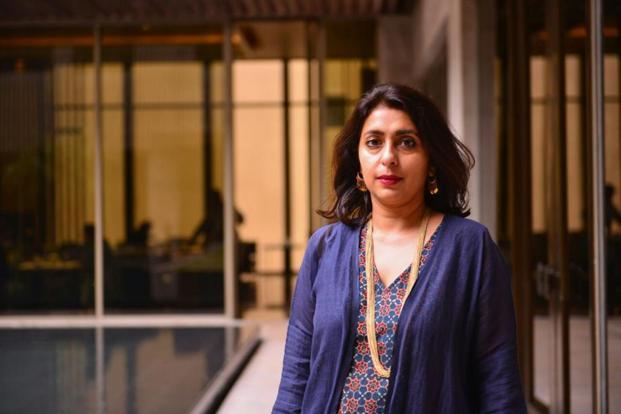By Vidhi Choudhary
Mint, New Delhi
WWR Article Summary (tl;dr) Great Q&A with Simran Lal, CEO of “Good Earth”. The design and lifestyle brand offers home decor, apparel and wellness products which celebrate Indian culture.
NEW DELHI
Design and lifestyle brand Good Earth, also one of India’s top décor labels, has completed 21 years in India. Simran Lal, daughter of Anita Lal who founded the brand in 1996, is the chief executive officer at Good Earth and clearly loves what she does.
Both the mother and daughter are hands on and deeply involved with the product design at Good Earth.
In the last 15 years, the company’s turnover has gone from Rs5 crore in 2001 to over Rs150 crore in 2016, with its clothing brand Sustain being the big money spinner in terms of volumes.
Lal, who was a speaker at the LyFe Symposium, a two-day luxury conference in New Delhi, spoke to Mint about changing consumption trends in India, her one-year old clothing sub-brand Nicobar and being a second generation woman entrepreneur.
Dressed in her own label, not surprisingly, Lal admitted that she isn’t a big shopper. Luxury for Lal is spending time with her children and talking walks in Delhi’s Humayun’s Tomb. Her company now has 700 employees and at Good Earth, she says, it’s always brand first and revenue later.
Edited Excerpts:
Question: So far in your journey, what are some of the surprising consumption trends that have emerged from India. What is India really buying from Good Earth?
A: When we launched (21 years ago), we were possibly ahead of time, pioneering in our space, like there was craft but not in the way that we wanted to put it out there. We wanted to celebrate color, celebrate Indian motifs and heritage.
Today, we don’t have to educate the consumer that much, we take that for granted actually. So, that’s the difference, the Indian consumer, in all, is very confident with being Indian. And that’s the big difference, it was really very different 21 years ago.
This shift has happened over the last 10 years, organically. I think shifts like these happen when the economy of the country is performing better, there is a sense of hope. I think these are things which are important, it’s not just about our brand.
Good Earth helps as a small catalyst in shaping that culture, where the Indian consumer feels a sense of pride and confidence in celebrating Indian clothes, here and internationally.
Question: In your session you said that Good Earth stands for passion, tradition and women. What is it like to be a second generation woman entrepreneur in present times?
A: It’s fabulous, I think we are very lucky. I think it’s become much easier to be a woman entrepreneur today. I can speak for myself, I feel like I have had it relatively easy (compared to my mother) but it’s because our organization is very welcoming of women. And because it’s a design-led organization, somehow it’s more acceptable when women are leaders compared to say in other fields like technology. Our CFO, head of operations, head of finance are all women. So overall, I do see more women in the work space across fields. They are more successful case studies today than there have been before.
Question: Last month, the legal notice sent to Fabindia rekindled the debate on the authenticity of khadi. As an invested stakeholder, what is your take on it?
A: I think for me, it’s about the bigger picture and what’s important is that khadi is being treated with so much respect now. And while it’s important to know, is it real khadi or not? It’s a good debate to have, it’s crucial to understand there is a handloom version, there is a non-handloom version and mixed fabrics like khadi cotton etc. As important as those technicalities and semantics are, I think it’s really important and a bigger thing to ask what has it done? People are proud to start wearing khadi, using khadi products. Earlier, it was for the politicians, today it is pop culture. So, I look at this debate slightly differently.
Question: Your company’s revenue grew from Rs5 crore to Rs150 crore in 15 years. Where is the growth coming from and what’s been the money spinner?
A: Our clothes (label)–Sustain–gave us a big boost. We started with clothes in 2010 seven years ago. It’s 100% craft led, it is about sustaining the craftsmen’s tradition. The sales for our brand really picked up because of a couple of reasons. One, there was a need gap in terms of design and detail that we filled, that resonated with people. They loved it, it was comfortable. And it brought us volumes as compared to our home decor segment. For instance, how many dinner sets can one buy? But clothes women can’t get enough of.
Question: Tell us about the consumer response to your new sub-brand Nicobar?
A: Me and my husband started Nicobar, under the big Good Earth family and umbrella, but it exists as its own brand now. It has a distinct design language of its own. We wanted to make Nicobar accessible in terms of price points because with Good Earth, we can’t do that, it is a luxury brand and is viewed as aspirational by many Indian consumers. With Nicobar, we have just turned one, and the response so far has been fantastic.














































































































































































































































































































































































